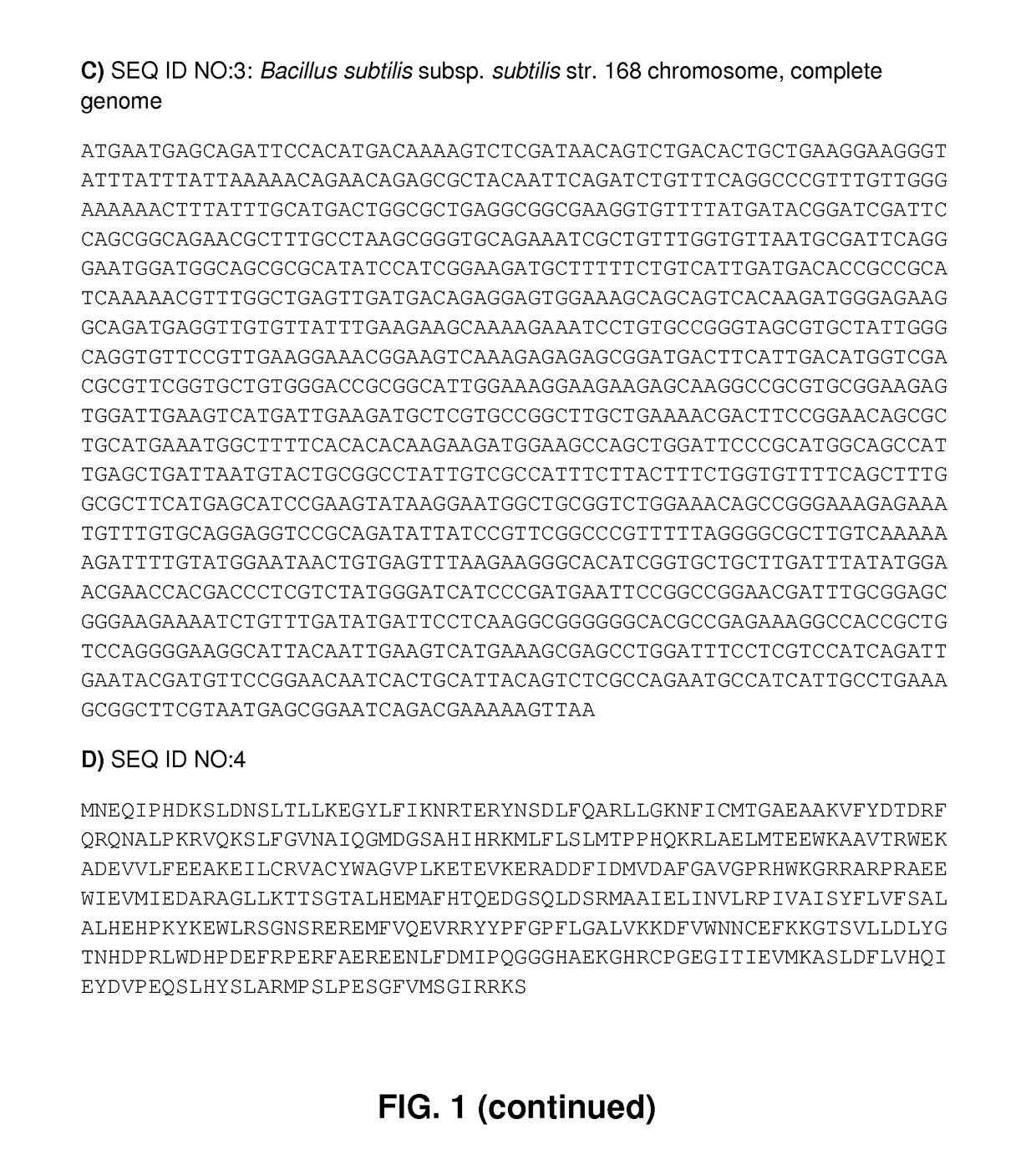Production of alpha-olefins
a technology of alpha-olefin and alpha-olefin, which is applied in the direction of lyases, polypeptides with his-tags, lubricant compositions, etc., can solve the problems of mixing that may not be desired, and achieve specific decarboxylase activity, facilitate the identification of similar enzymes, and specific decarboxylase activity
- Summary
- Abstract
- Description
- Claims
- Application Information
AI Technical Summary
Benefits of technology
Problems solved by technology
Method used
Image
Examples
example 3
n of α-Olefins and Hydroxy Fatty Acids by Sm46-Del29, Bs168 and Aa162
[0170]Recombinantly expressed and purified Bs168 and Aa162 from Example 1 and Sm46-de129 of Example 2 were reacted with C14 fatty acid and the products of decarboxylation (C13 α-olefin) and hydroxylation (α-OH—O14 fatty acid and β-OH—C14 fatty acid) reactions were analyzed.
[0171]All enzymes tested were able to decarboxylate myristic acid (C14), but also catalyzed α- and β-hydroxylation of myristic acid as side reactions. Fatty acid decarboxylation was the dominant reaction for all tested enzymes, but Sm46-del29 formed less hydroxy fatty acids, indicating that these enzymes have specific decarboxylase activity.
PUM
| Property | Measurement | Unit |
|---|---|---|
| time | aaaaa | aaaaa |
| freezing temperature | aaaaa | aaaaa |
| optical density | aaaaa | aaaaa |
Abstract
Description
Claims
Application Information
 Login to View More
Login to View More - R&D
- Intellectual Property
- Life Sciences
- Materials
- Tech Scout
- Unparalleled Data Quality
- Higher Quality Content
- 60% Fewer Hallucinations
Browse by: Latest US Patents, China's latest patents, Technical Efficacy Thesaurus, Application Domain, Technology Topic, Popular Technical Reports.
© 2025 PatSnap. All rights reserved.Legal|Privacy policy|Modern Slavery Act Transparency Statement|Sitemap|About US| Contact US: help@patsnap.com



